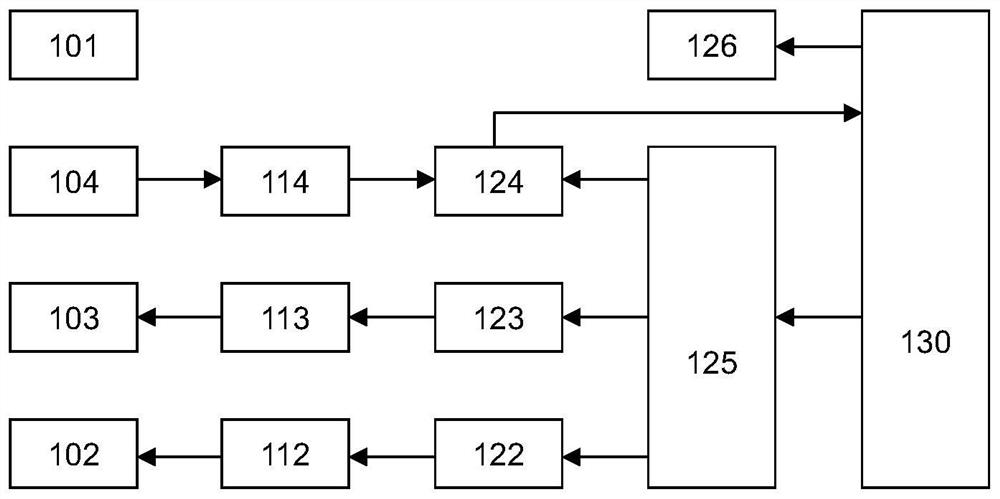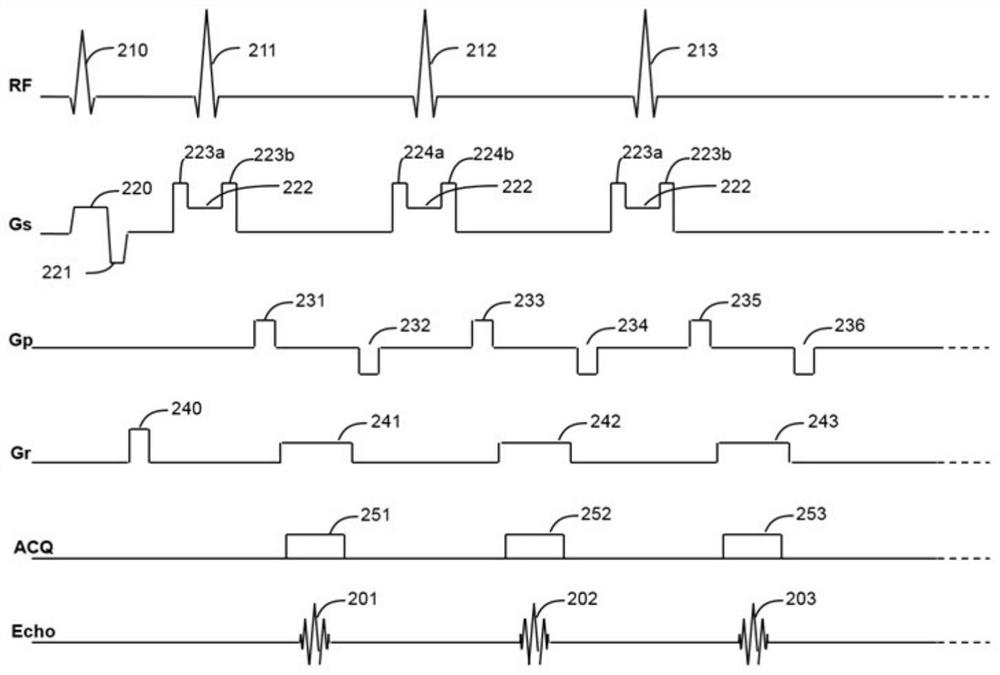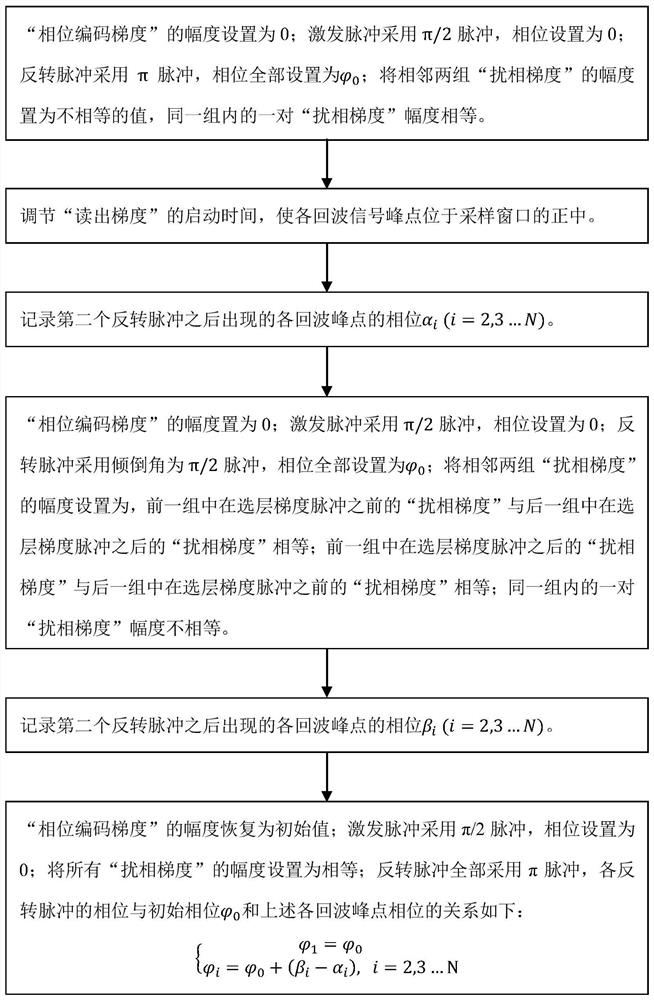An Optimal Method for Radio Frequency Pulses in Fast Spin Echo Pulse Sequences
A technology of spin echo and pulse sequence, which is applied in the fields of magnetic variable measurement, nuclear magnetic resonance imaging system measurement, magnetic resonance measurement, etc., can solve the problems that the synthetic signal cannot obtain the optimal result and the optimization result is not ideal, and achieves Effects of reducing influence, improving optimization efficiency, and meeting the needs of magnetic resonance imaging
- Summary
- Abstract
- Description
- Claims
- Application Information
AI Technical Summary
Problems solved by technology
Method used
Image
Examples
Embodiment 1
[0041] refer to figure 2 with image 3 , the method for optimizing radio frequency pulses in the fast spin echo pulse sequence provided by the present invention comprises the following specific steps:
[0042] a) Set the amplitudes of "phase encoding gradients" 231, 232, 233, 234, 235, and 236 to 0; the excitation pulse 210 uses π / 2 pulses, and the phase of the excitation pulse is set to 0; the inversion pulses 211, 212, and 213 are all With π pulses, the inverted pulse phases are all set to The amplitudes of two adjacent groups of "spoiler gradients" are set to unequal values, and the amplitudes of a pair of "spoiler gradients" in the same group are equal, that is, setting (223a=223b)≠(224a=224b);
[0043] b) Adjust the starting time of the "readout gradient" 241, 242 and 243, so that the peak points of the echo signals 201, 202 and 203 on the echo chain are located in the middle of the sampling window. If the time difference between the peak point of 202 and the center ...
Embodiment 2
[0052] refer to figure 2 with Figure 4 , the method for optimizing radio frequency pulses in the fast spin echo pulse sequence provided by the present invention comprises the following specific steps:
[0053] a) Set the amplitudes of "phase encoding gradients" 231, 232, 233, 234, 235, and 236 to 0; the excitation pulse 210 uses π / 2 pulses, and the phase of the excitation pulse is set to 0; the inversion pulses 211, 212, and 213 are all With π / 2 pulses, the reverse pulse phases are all set to Set the amplitude of the adjacent two groups of "spoiler gradients" so that the "spoiler gradient" before the layer selection gradient pulse in the previous group is equal to the "spoiler gradient" after the layer selection gradient pulse in the latter group, The "spoiler gradient" after the layer selection gradient pulse in the previous group is equal to the "spoiler gradient" before the layer selection gradient pulse in the latter group; the amplitude of a pair of "spoiler gradient...
PUM
 Login to View More
Login to View More Abstract
Description
Claims
Application Information
 Login to View More
Login to View More - R&D
- Intellectual Property
- Life Sciences
- Materials
- Tech Scout
- Unparalleled Data Quality
- Higher Quality Content
- 60% Fewer Hallucinations
Browse by: Latest US Patents, China's latest patents, Technical Efficacy Thesaurus, Application Domain, Technology Topic, Popular Technical Reports.
© 2025 PatSnap. All rights reserved.Legal|Privacy policy|Modern Slavery Act Transparency Statement|Sitemap|About US| Contact US: help@patsnap.com



